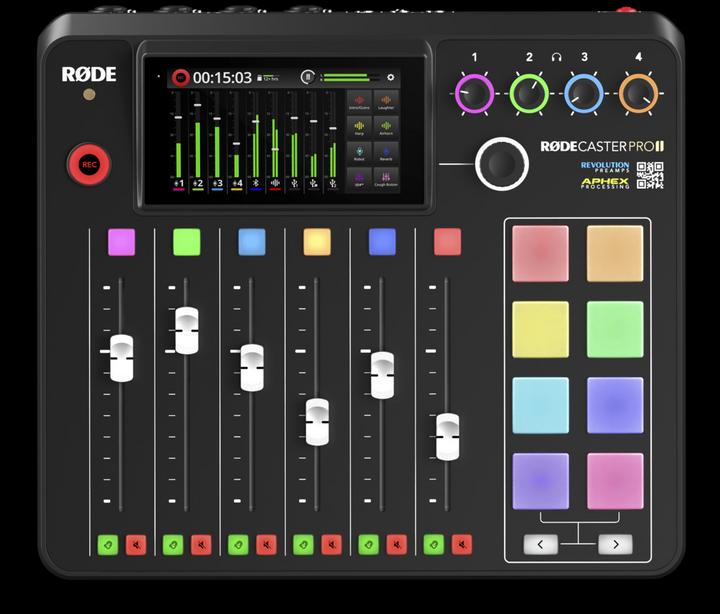
RØDE RODECaster Pro II
Studio- and Livemixer

RØDE RODECaster Pro II
Studio- and Livemixer
I would like to purchase a RodeCaster Pro or Duo for the following application (university teaching, hybrid) - 1. connection via Bluetooth to an Array Mic / Speakerphone (Logitech Group). 2. Wii connection to a Go II (supposedly supported by the product). 3. audio ducking from the Bluetooth device I don't really need the analogue microphone inputs. Does anyone have experience with RodeCaster Pro with Bluetooth devices (Mic + Speaker)? Are the Bluetooth inputs "full-fledged" - i.e. can all effects (especially ducking) also be applied to them? Thank you very much for the answer, in advance.
Question 1:
In principle, Bluetooth Clients can also be connected to the RODECaster Pro II.
We have tried it here with a Beyerdynamic Speaker Phone and a Bluetooth headset. Both receive a signal from the RODECaster Pro II to the speaker. However, getting the microphone signal to the RODECaster was more problematic. Both of the devices we tested expected some sort of command to transmit the microphone signal. A command comparable to a signalled call from a smartphone. However, we were not able to do this here. We do not know the Logitech system well enough to be able to make a reliable statement.
In principle, the RODECaster Pro II can both receive and send signals via Bluetooth. However, it depends on the device on the other side how and whether it works.
It should also be noted that only one Bluetooth device can be connected at a time. If the speakers and the microphone array are two Bluetooth devices, only one device can be connected.
Question 2:
Yes, up to two Wireless GO II transmitters can be connected to the RODECaster Pro II. These replace two of the four analogue inputs.
Question 3:
The Bluetooth channel is basically fully functional. But only the first microphone channel can be used as ducking source. This means that a level present on the first channel determines that all other channels are lowered. Any other channel, except channel 1, cannot be used to control ducking, i.e. not even the Bluetooth channel.